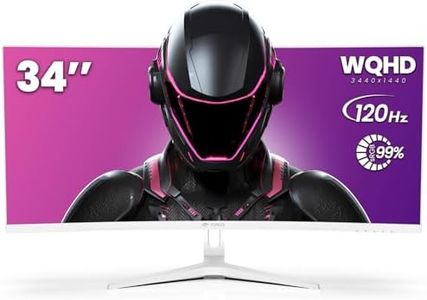We Use CookiesWe use cookies to enhance the security, performance,
functionality and for analytical and promotional activities. By continuing to browse this site you
are agreeing to our privacy policy
10 Best Curved Gaming Monitors
From leading brands and best sellers available on the web.Buying Guide for the Best Curved Gaming Monitors
Choosing a curved gaming monitor is all about matching the screen to how you play and where you play. Curved monitors are designed to give you a more immersive experience by wrapping the screen around your field of vision, which makes gameplay feel deeper and more engaging. Before picking a specific model, think about your gaming space, the types of games you usually play, and how close you’ll sit to the screen. Always consider what features matter most for your enjoyment and comfort, as a monitor that's perfect for one gamer might not be right for another.Curvature (Curve Radius)Curvature, often listed with numbers like 1000R, 1500R, or 1800R, describes how deeply the screen is curved. The 'R' value is the radius in millimeters if you made a full circle out of the screen. A lower number means a more aggressive curve, while a higher number indicates a gentler curve. For players sitting very close to their monitors—like with racing sims or first-person shooters—tighter curves (like 1000R or 1500R) can feel more immersive. If you mainly play from further away or use the monitor for both work and gaming, a gentler curve (like 1800R or 3000R) feels more natural and is easier on the eyes for general tasks.
Screen SizeScreen size in curved gaming monitors usually ranges from around 27 inches to over 49 inches. A larger screen makes the curve more noticeable and immersive, but it can also require more desk space and can be overwhelming if you sit too close. If you want a wide, cinematic experience—like with flight sims or RPGs—larger sizes (34 inches and up) are ideal. For competitive gaming or smaller spaces, a 27 to 32-inch monitor is usually easier to manage and keeps all the action within your line of sight.
ResolutionResolution tells you how many pixels the monitor can show and is typically given as 1080p (Full HD), 1440p (QHD), or 2160p (4K). Higher resolutions make images and text clearer but need more powerful hardware to run games smoothly. If you want very sharp details and have a strong gaming PC, higher resolutions like QHD or 4K are great—especially with larger screens. For casual gaming, competitive esports, or if your computer isn't the newest, 1080p is often enough and can give you faster performance.
Refresh RateRefresh rate is how many times per second your monitor updates the picture, measured in hertz (Hz). The most common rates are 60Hz, 120Hz, 144Hz, and 240Hz. A higher refresh rate means smoother motion and is especially important for fast-paced games like shooters or racing games, where every frame counts. Casual gamers or those playing mostly single-player adventure games can be happy with 60Hz or 75Hz. If you’re into competitive gaming, aim for at least 120Hz or 144Hz to get the smoothest possible experience.
Response TimeResponse time refers to how quickly a pixel can change from one color to another, usually measured in milliseconds (ms). Lower response times (1ms to 5ms) help make moving objects look clear and reduce motion blur. This is especially important for action-packed and competitive games. If you mainly play slower-paced, story-driven games or use the monitor for general tasks as well, response time is less noticeable and you can be flexible here.
Panel TypePanel type tells you about the technology behind the display, the most common being VA, IPS, and TN. VA panels are common in curved monitors and offer deep contrast and great colors, but sometimes slower response times. IPS panels have better viewing angles and color accuracy, but can be pricier. TN panels are fastest but usually have weaker colors and angles. If you love vibrant visuals or also watch movies, VA or IPS is better. If you’re all about the fastest reactions in games, look for faster TN or well-tuned VA panels.
ConnectivityConnectivity covers ports like HDMI, DisplayPort, USB, or even audio out. More modern ports (like DisplayPort or HDMI 2.1) support higher resolutions and refresh rates. Make sure the monitor has the right ports for your PC or console, and that there are enough to connect all your devices. If you want to use extra devices, like a sound system or USB peripherals, look for monitors with extra ports for convenience.


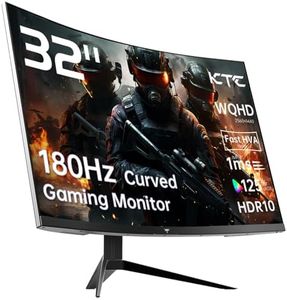
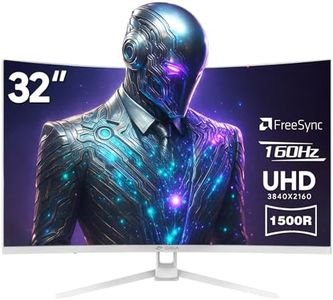
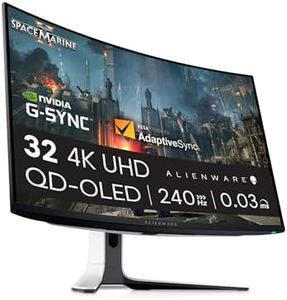
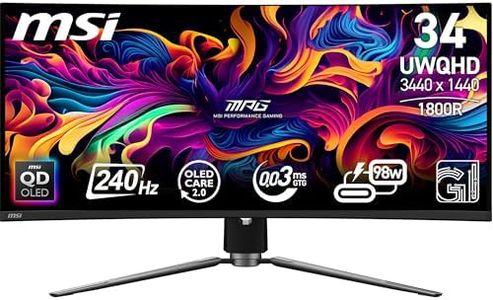
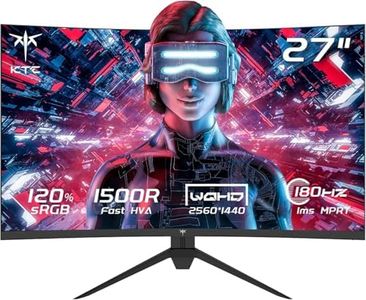
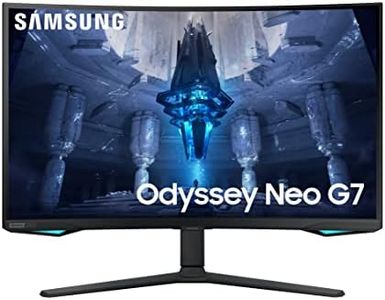
![PRISM+ XQ340 PRO 34" QLED 1ms Curved Ultrawide WQHD [3440 x 1440] Adaptive Sync Gaming Monitor](https://images-proxy.bestreviews.guide/3ORsjxMFLyKvkkehb5A9j7Xvxx8=/0x300/https://m.media-amazon.com/images/I/41nYIVcAHfL._AC_CX679_.jpg)

